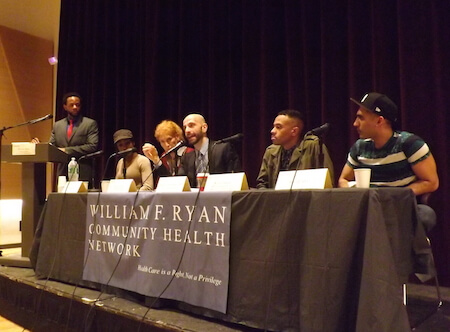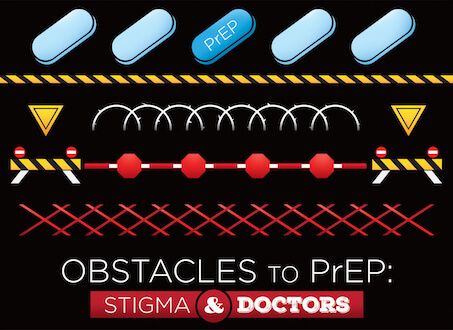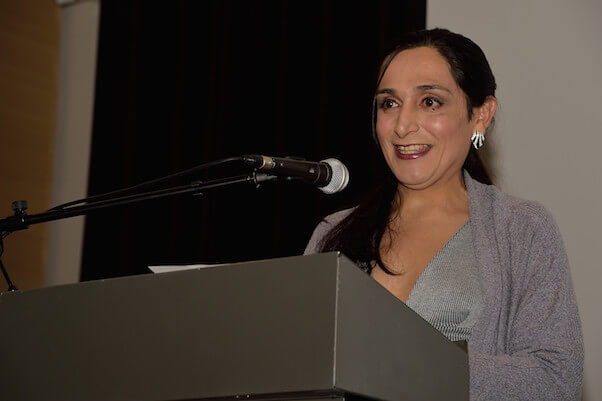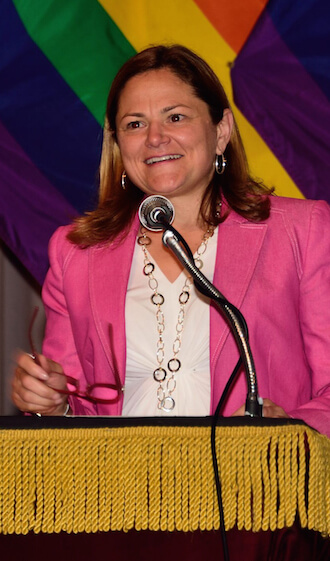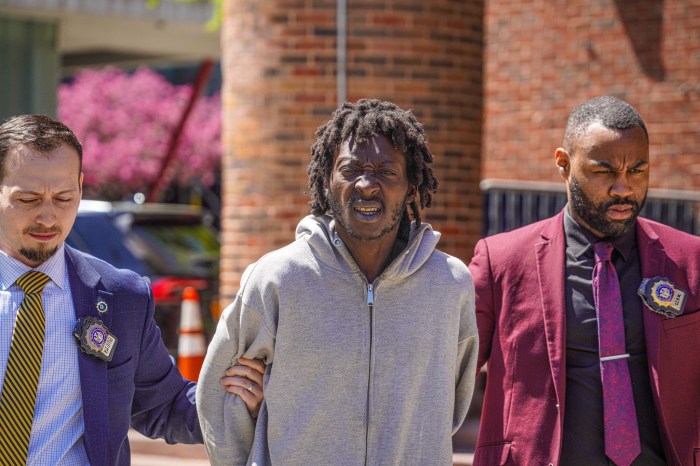Two female couples from the Darned Club looking out from Clear Comfort in Staten Island across the Narrows to Brooklyn in 1891. | COURTESY OF HISTORIC RICHMONDTOWN
I first visited Alice Austen House — a 1690 Dutch farmhouse known as Clear Comfort that faces the Narrows between Staten Island and Brooklyn at the entrance to New York Harbor — more than 15 years ago. I have no recollection of the famed photographer’s partner, Gertrude Tate, being mentioned, so I am overjoyed to have seen “Fine, Bright Day,” a new exhibit at the LGBT Community Center surveying Austen’s work.
Although she died in poverty, a result of the stock market crash of 1929, for much of her life Austen (1866-1952) flourished. Family money put her both in a position to travel and gave her the means to own photographic equipment generally unheard of for a woman of her time. She was the first woman to own a car on Staten Island. Ultimately, she died a pauper but not without being recognized for her work.
The exhibit at the Center is lovely for what it is. As expected at an LGBTQ venue, it focuses primarily on Austen’s playful photos of her women — presumably lesbian — friends. Playful to us, but probably subversive at the time! Women together in bed, in sexy pose, or awaiting a third to fall asleep. Others dressed as men or looking very proper but gazing at each other in pairs. She was also a photographer of early female athleticism — gymnasts and bicyclists. Some of these works are subtle, some not so much, but all clearly of the women-loving woman variety.
Community Center hosts exhibition of pioneering lesbian photographer’s work
Alice Austen at age 22. | ALICE AUSTEN HOUSE
Groups of men (who strike me as gay) are also represented in photos depicting what Austen referred to as “the Larky Life.” One of the photos of the boys on the beach strikes me as particularly prescient of a Fire Island world to come. These staged portraits are meticulously framed and clever and give us a representation of a time in our queer history that enjoys scarce documentation.
Alice met Gertrude in 1899, when Tate was recovering from Typhoid Fever, at a Catskills hotel where Alice had gone on one of her photographic journeys. The women formed an instant bond and returned to the Catskills and the Adirondacks often. A beautiful region, this is where Austen photographed some of her most glorious landscapes. Her talent for perfect lighting and composition was astounding. As a photographer of people, with no talent for nature, I find it a marvel.
For 18 years, while Gertrude’s family fretted over her “wrong devotion” to Alice, she was a frequent visitor to Clear Comfort, Austen’s Staten Island refuge, and spent summers traveling Europe with her, as well. Gertrude finally moved into Clear Comfort in 1917 after her mother sold their Brooklyn home. Although not buried together, their relationship lasted more than 50 years, until Austen’s death.
Austen’s skills went beyond landscapes and formal portraits.
The Center exhibit is wonderful enough not to get hung up on what is missing, but I must say that her photographs of the docks and dock workers of Staten Island, underrepresented here, are among her best works. Additionally, in this era of street photography by everyone — thanks to the camera phone — it would have been nice to see some of hers. Austen referred to them as “street types” and they are truly outstanding.
Alice Austen and two friends in moustache drag from the Larky Life. | COLLECTION OF THE STATEN ISLAND HISTORICAL SOCIETY
Still, there is much to enjoy at the Center exhibit. Austen was a prolific lesbian photographer to be proud of — not just for her great talent but also for her strength and independence in what was truly a man’s world.






























